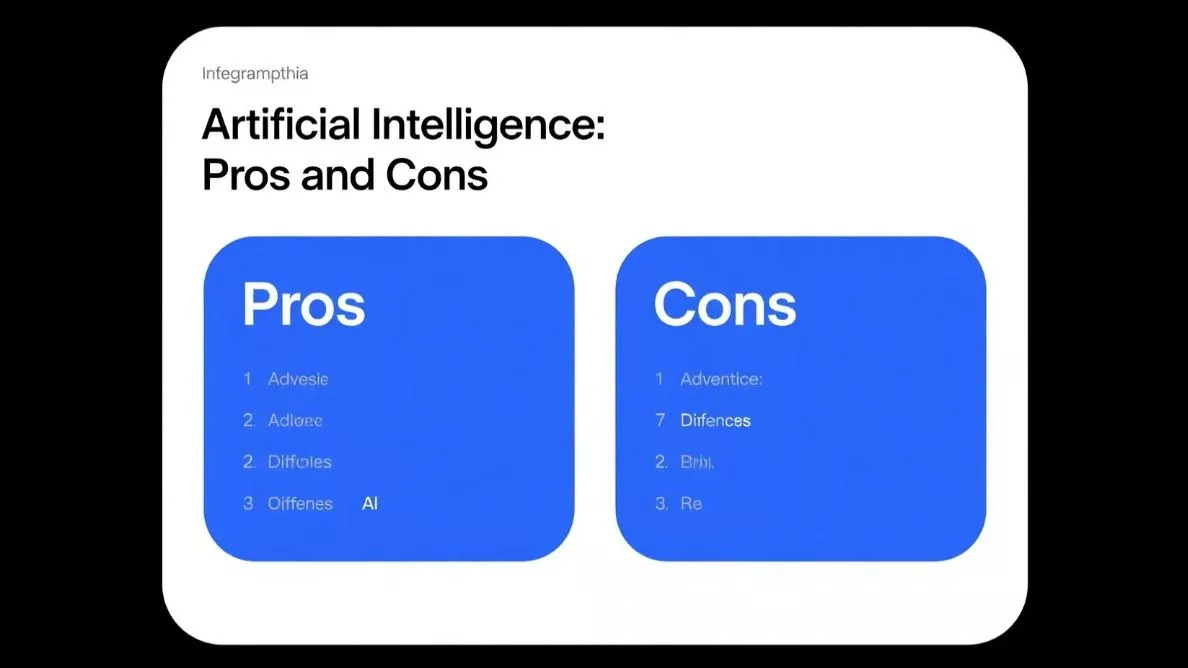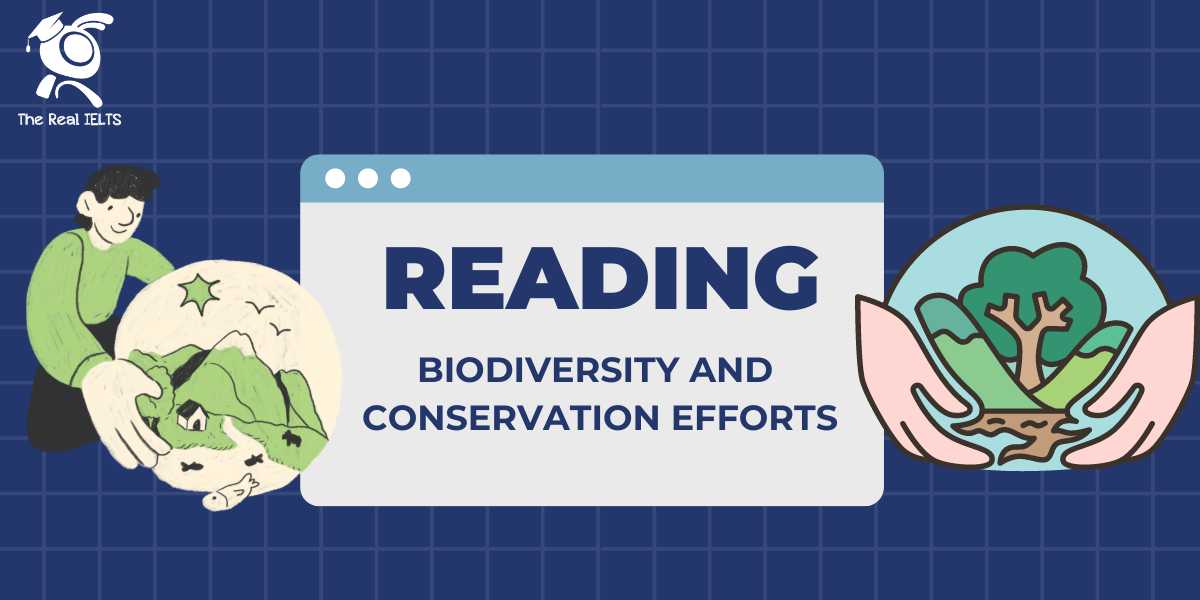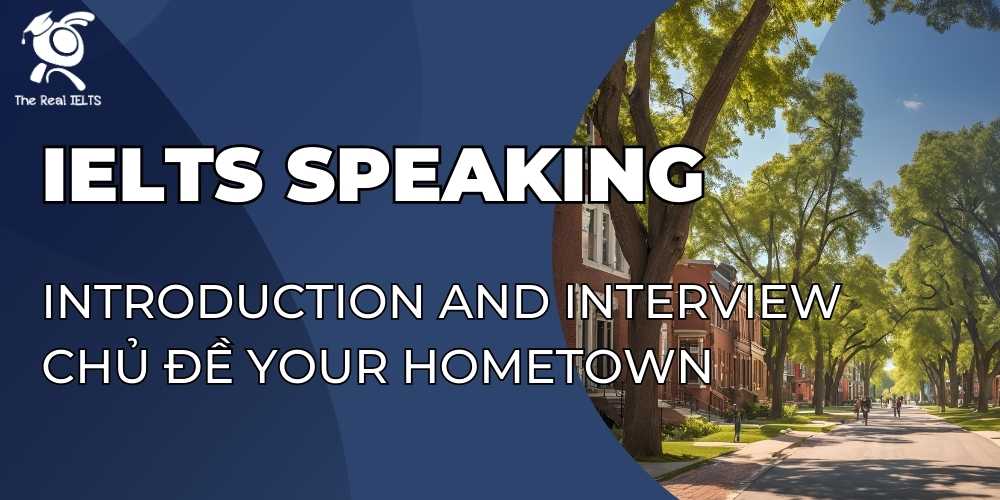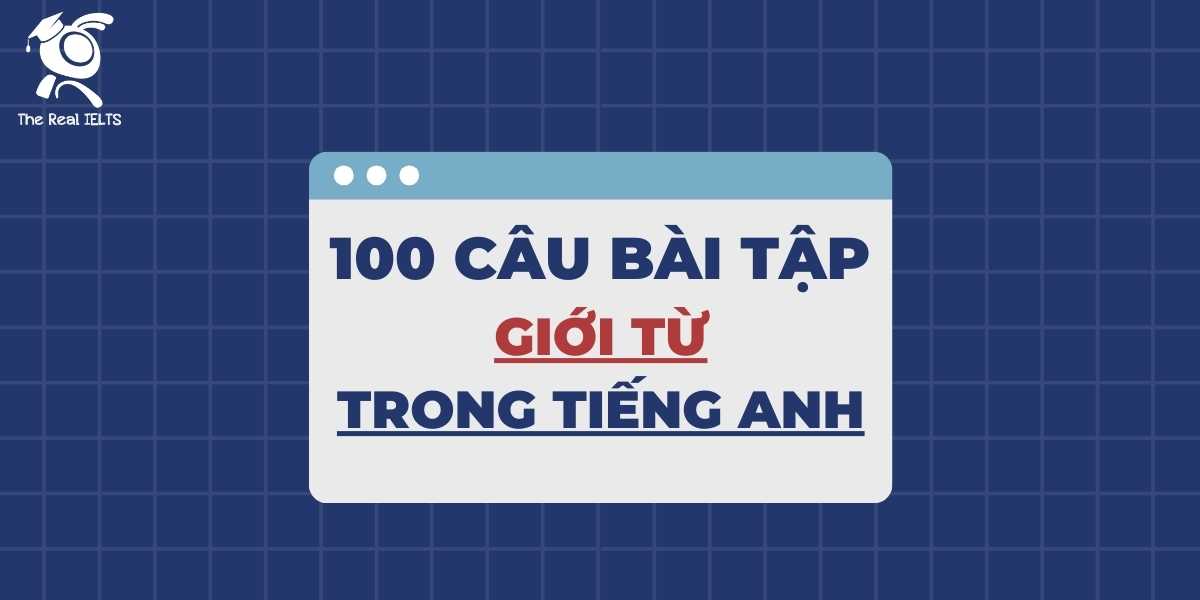Kỹ năng viết trong kỳ thi IELTS luôn là thách thức lớn với người học, đặc biệt ở IELTS Writing Task 2 Phần 69, nơi yêu cầu khả năng phân tích sâu sắc và trình bày ý tưởng mạch lạc. Theo khảo sát từ Hội đồng Anh, hơn 60% thí sinh gặp khó khăn trong việc đạt band 6.5+ do thiếu chiến lược tổ chức bài viết. Một mở bài hiệu quả không chỉ gây ấn tượng mà còn đặt nền tảng cho lập luận chặt chẽ, đáp ứng tiêu chí chấm điểm khắt khe.
Đọc thêm: IELTS Writing Task 2 Phần 68
Đề 1 IELTS Writing Task 2
Some people believe that the best way to reduce crime is to impose harsher punishments, while others think that providing better education and job opportunities is more effective. Discuss both views and give your own opinion.
Bài essay (Band 6.5)
Crime is a serious issue in many societies, and people have different views on how to tackle it. Some argue that stricter punishments are the best solution, while others believe that improving education and job opportunities is more effective. This essay will discuss both perspectives and explain why I support the latter.
On the one hand, those who favor harsher punishments believe that they deter potential criminals. For example, long prison sentences or heavy fines can make people think twice before committing crimes like theft or vandalism. This approach is straightforward and can show immediate results, as fear of punishment may reduce crime rates in the short term. However, it does not address the root causes of criminal behavior, such as poverty or lack of education, which often lead people to crime.
On the other hand, providing better education and job opportunities can prevent crime more effectively. When people have access to good schools and stable jobs, they are less likely to turn to illegal activities. For instance, programs that teach skills and offer employment can help young people avoid crime. This method may take longer to show results, but it creates a lasting impact by improving people’s lives and reducing the factors that cause crime.
In my opinion, education and job opportunities are more effective because they address the underlying causes of crime. While punishments may stop some crimes, they do not solve the problem permanently. Therefore, governments should invest in education and employment to build a safer society.
Chấm điểm (4 tiêu chí)
Task Response: 6.5
The essay addresses both views and provides a clear opinion, meeting the task requirements. However, the arguments lack depth, with limited development of ideas (e.g., no specific examples for education programs). To reach Band 7, more detailed examples and a stronger justification of the opinion are needed.
Coherence and Cohesion: 6.5
The essay is logically organized with clear paragraphs and basic linking words (e.g., “On the one hand,” “For example”). However, transitions between ideas are sometimes mechanical, and cohesion could be improved with more varied cohesive devices. Band 7 requires smoother idea flow and less repetitive linking.
Lexical Resource: 6.5
The vocabulary is appropriate, with some academic words (e.g., deter, underlying causes), but the range is limited, and some terms are repeated (e.g., “crime”). To achieve Band 7, a wider variety of precise vocabulary and collocations is needed.
Grammatical Range and Accuracy: 6.5
The essay uses a mix of simple and complex sentences, with mostly accurate grammar. However, there are minor errors (e.g., may reduce crime rates could be more precise), and the range of structures is not extensive. Band 7 requires more varied sentence structures and fewer errors.
Phân tích từ vựng
- Deter
- Nghĩa tiếng Việt: Ngăn chặn, răn đe
- Giải thích: Từ này thường dùng trong ngữ cảnh học thuật để chỉ việc ngăn cản hành vi không mong muốn (e.g., “Harsher laws can deter crime”). Nó mang sắc thái trang trọng, phù hợp với IELTS Writing.
- Underlying causes
- Nghĩa tiếng Việt: Nguyên nhân gốc rễ
- Giải thích: Cụm từ này được dùng để chỉ các yếu tố cốt lõi dẫn đến một vấn đề, thường xuất hiện trong bài Problem-Solution hoặc Discussion (e.g., “Addressing underlying causes is essential”).
- Root causes
- Nghĩa tiếng Việt: Nguyên nhân chính
- Giải thích: Tương tự underlying causes, cụm này mang tính học thuật, dùng để phân tích sâu vấn đề (e.g., “Poverty is a root cause of crime”).
- Straightforward
- Nghĩa tiếng Việt: Đơn giản, dễ hiểu
- Giải thích: Từ này thường dùng để mô tả một giải pháp hoặc phương pháp dễ thực hiện (e.g., “This is a straightforward way to reduce crime”). Nó phù hợp với bài viết ở mức Band 6–7.
- Lasting impact
- Nghĩa tiếng Việt: Tác động lâu dài
- Giải thích: Cụm từ này dùng để nhấn mạnh hiệu quả bền vững của một giải pháp, thường thấy trong bài Advantage-Disadvantage hoặc Opinion (e.g., “Education has a lasting impact on society”).
Phân tích ngữ pháp
- May reduce crime rates
- Giải thích tiếng Việt: Câu này dùng động từ tình thái “may” để diễn đạt khả năng, phù hợp với ngữ cảnh học thuật. Tuy nhiên, nó hơi đơn giản và lặp lại. Để đạt Band 7, có thể thay bằng cấu trúc như “is likely to significantly lower crime rates” để tăng độ chính xác và phong phú.
- When people have access to good schools and stable jobs
- Giải thích tiếng Việt: Đây là mệnh đề trạng ngữ thời gian, sử dụng đúng cấu trúc “when + S + V.” Tuy nhiên, câu này thiếu sự đa dạng về loại mệnh đề (e.g., có thể dùng “provided that” hoặc “as long as” để tăng điểm).
- Which often lead people to crime
- Giải thích tiếng Việt: Mệnh đề quan hệ “which” được dùng đúng để bổ nghĩa cho “root causes.” Tuy nhiên, bài viết chỉ dùng “which” một cách cơ bản. Để đạt Band 7, nên kết hợp các mệnh đề quan hệ khác (e.g., “who,” “whose”) hoặc cấu trúc phức tạp hơn.
Tổng kết & gợi ý cải thiện
Tổng kết: Bài viết đạt Band 6.5 nhờ cấu trúc rõ ràng, ý tưởng phù hợp, và từ vựng, ngữ pháp ở mức khá. Tuy nhiên, nó thiếu sự phát triển ý sâu sắc, từ vựng đa dạng, và cấu trúc ngữ pháp phong phú, khiến bài chưa đạt Band 7. Các lỗi nhỏ như lặp từ và thiếu ví dụ cụ thể cũng làm giảm chất lượng.
Gợi ý cải thiện:
- Phát triển ý: Thêm ví dụ cụ thể (e.g., tên chương trình giáo dục thực tế) để tăng tính thuyết phục.
- Từ vựng: Sử dụng các cụm từ học thuật đa dạng hơn (e.g., “mitigate” thay vì “reduce,” “socioeconomic factors” thay vì “poverty”).
- Ngữ pháp: Kết hợp các cấu trúc phức tạp như câu điều kiện, mệnh đề quan hệ rút gọn, hoặc câu bị động.
- Liên kết: Dùng các từ nối linh hoạt hơn (e.g., “consequently,” “in contrast”) để tăng tính mạch lạc.
Đề 2 IELTS Writing Task 2
Some people believe that the best way to improve public health is to increase the number of sports facilities. Others, however, argue that this would have little effect and other measures are needed. Discuss both views and give your own opinion.
Bài essay (Band 6.5)
Public health is a significant concern in many countries. While some argue that building more sports facilities is the best solution, others believe that this approach is ineffective and alternative measures are required. This essay will discuss both perspectives and present my opinion.
On the one hand, increasing sports facilities can encourage physical activity. Many people, especially in urban areas, lack access to gyms or parks, which discourages them from exercising. By providing more facilities, governments can make it easier for individuals to stay active, thus reducing obesity and related diseases. For instance, community sports centers offer affordable options for people to engage in activities like swimming or badminton. This approach is practical because it directly addresses the lack of infrastructure.
On the other hand, some argue that sports facilities alone are insufficient. Many individuals lead busy lives and may not prioritize exercise, even if facilities are available. Additionally, public health issues like poor diet or smoking cannot be solved by sports alone. Instead, campaigns to raise awareness about healthy eating or stricter regulations on tobacco could be more effective. For example, educational programs in schools can teach children about balanced diets, which has a long-term impact.
In my opinion, while sports facilities are beneficial, they are not enough. A combination of infrastructure development and public awareness campaigns is necessary to tackle public health issues effectively. Governments should invest in both to achieve better results.
In conclusion, although sports facilities can promote physical activity, other measures like education and regulations are equally important. A balanced approach is the key to improving public health.
Chấm điểm (4 tiêu chí)
Task Response: 6.5
The essay addresses both views and provides a clear opinion, meeting the task requirements. However, the arguments are somewhat basic, with limited development of ideas (e.g., examples are relevant but not deeply explored). To reach Band 7, more specific evidence or deeper analysis is needed.
Coherence and Cohesion: 6.5
The essay is logically organized with clear paragraphs, and linking words like “for instance” and “on the other hand” are used appropriately. However, transitions between ideas could be smoother, and some sentences feel repetitive. Band 7 requires more varied cohesive devices and seamless flow.
Lexical Resource: 6.5
The vocabulary is appropriate, with some academic words like “infrastructure” and “awareness.” However, word choice is occasionally repetitive (e.g., “facilities” used multiple times), and there is limited use of higher-level vocabulary. Band 7 needs more precise and varied word choices.
Grammatical Range and Accuracy: 6.5
The essay uses a mix of simple and complex sentences, with mostly accurate grammar. Minor errors (e.g., article misuse in “the lack of infrastructure”) do not impede understanding but prevent a higher score. Band 7 requires more consistent accuracy and a wider range of structures.
Phân tích từ vựng
- encourage physical activity
- Nghĩa tiếng Việt: Khuyến khích hoạt động thể chất
- Giải thích: Cụm từ này thường dùng trong văn học thuật để nói về việc thúc đẩy lối sống năng động. Nó phù hợp khi thảo luận về lợi ích của thể thao hoặc các chính sách sức khỏe cộng đồng. Trong bài, cụm này được dùng để nhấn mạnh vai trò của cơ sở thể thao.
- raise awareness
- Nghĩa tiếng Việt: Nâng cao nhận thức
- Giải thích: Cụm từ phổ biến trong các bài viết về giáo dục hoặc sức khỏe, ám chỉ việc thông báo hoặc giáo dục công chúng về một vấn đề. Trong bài, nó được dùng để nói về các chiến dịch sức khỏe.
- address the issue
- Nghĩa tiếng Việt: Giải quyết vấn đề
- Giải thích: Cụm từ học thuật, thường dùng để chỉ việc tập trung xử lý một vấn đề cụ thể. Trong bài, nó được dùng để nhấn mạnh rằng cơ sở thể thao giải quyết vấn đề thiếu cơ sở hạ tầng.
- long-term impact
- Nghĩa tiếng Việt: Tác động dài hạn
- Giải thích: Dùng để chỉ hiệu quả kéo dài của một giải pháp, thường xuất hiện trong các bài luận về chính sách hoặc giáo dục. Trong bài, cụm này nhấn mạnh lợi ích của giáo dục dinh dưỡng.
- balanced approach
- Nghĩa tiếng Việt: Cách tiếp cận cân bằng
- Giải thích: Cụm từ này dùng để đề xuất một giải pháp kết hợp nhiều yếu tố. Trong bài, nó được dùng ở kết luận để nhấn mạnh sự cần thiết của cả cơ sở thể thao và giáo dục.
Phân tích ngữ pháp
- the lack of infrastructure
- Giải thích tiếng Việt: Cụm từ này đúng ngữ pháp, nhưng trong bài, việc dùng “the” có thể không hoàn toàn cần thiết vì “infrastructure” là danh từ không đếm được và chưa được đề cập trước đó. Cách dùng đúng hơn là “lack of infrastructure” hoặc “a lack of specific infrastructure.” Sai sót nhỏ này phổ biến ở Band 6.5.
- governments can make it easier
- Giải thích tiếng Việt: Câu này sử dụng cấu trúc “make it + tính từ” đúng ngữ pháp, thể hiện khả năng của chính phủ trong việc tạo điều kiện. Đây là cấu trúc đơn giản nhưng hiệu quả, phù hợp với trình độ Band 6.5.
- cannot be solved by sports alone
- Giải thích tiếng Việt: Câu này sử dụng dạng bị động “be solved” đúng ngữ pháp, kết hợp với “by” để chỉ tác nhân. Tuy nhiên, bài viết thiếu các cấu trúc bị động phức tạp hơn, điều cần thiết để đạt Band 7.
- which has a long-term impact
- Giải thích tiếng Việt: Mệnh đề quan hệ “which” được dùng đúng để bổ nghĩa cho “educational programs.” Tuy nhiên, bài viết sử dụng mệnh đề quan hệ khá đơn giản, thiếu sự đa dạng (ví dụ: mệnh đề rút gọn) để đạt điểm cao hơn.
- Minor article error (e.g., “the lack of”)
- Giải thích tiếng Việt: Một số lỗi nhỏ về mạo từ như “the lack of infrastructure” thay vì “lack infrastructure” xuất hiện trong bài. Những lỗi này không ảnh hưởng lớn đến ý nghĩa nhưng làm giảm điểm ở tiêu chí Grammatical Accuracy.
Tổng kết & gợi ý cải thiện
Tổng kết: Bài essay đạt Band 6.5 nhờ cấu trúc rõ ràng, lập luận phù hợp, và từ vựng học thuật cơ bản. Tuy nhiên, các ý chưa được phát triển sâu, từ vựng còn lặp lại, và một số lỗi ngữ pháp nhỏ ngăn bài đạt Band 7.
Gợi ý cải thiện:
- Task Response: Cung cấp ví dụ cụ thể hơn (e.g., số liệu hoặc nghiên cứu) và phân tích sâu hơn về tác động của các giải pháp.
- Coherence and Cohesion: Sử dụng nhiều liên từ đa dạng hơn (e.g., “moreover,” “consequently”) và tránh lặp lại từ như “facilities.”
- Lexical Resource: Thay thế các từ lặp bằng từ đồng nghĩa (e.g., “facilities” → “amenities,” “centers”) và dùng collocations nâng cao (e.g., “combat obesity”).
- Grammatical Range: Sử dụng câu phức tạp hơn (e.g., câu điều kiện, mệnh đề quan hệ rút gọn) và kiểm tra kỹ mạo từ hoặc cấu trúc bị động.
Đề 3 IELTS Writing Task 2
Some people believe that governments should invest more in public transportation to reduce traffic congestion and pollution. Others argue that building more roads is a better solution. Discuss both views and give your own opinion.
Bài essay (Band 6.5)
In many cities, traffic congestion and pollution are serious problems. While some people suggest that governments should focus on improving public transportation, others believe that constructing more roads is more effective. This essay will discuss both perspectives and present my own view.
On the one hand, investing in public transportation can significantly reduce traffic jams and environmental issues. By providing reliable and affordable buses or trains, governments can encourage people to leave their cars at home. For example, in cities like Singapore, efficient public transport systems have reduced the number of private vehicles, leading to less air pollution. Additionally, public transport is more environmentally friendly because it uses fewer resources per person compared to cars. However, building and maintaining these systems can be expensive, and it may take years to see results.
On the other hand, building more roads is seen as a quicker solution to ease traffic congestion. Wider roads or new highways can accommodate more vehicles, allowing smoother traffic flow. For instance, in some developing countries, new road projects have helped reduce travel time. Nevertheless, this approach may not solve pollution problems, as more roads could encourage more people to drive, resulting in higher emissions.
In my opinion, investing in public transportation is the better option. It not only reduces traffic but also promotes sustainability by cutting down emissions. Although building roads may provide short-term relief, it does not address the root causes of congestion and pollution.
In conclusion, while both solutions have merits, prioritizing public transportation is more effective for long-term environmental and traffic benefits.
Chấm điểm (4 tiêu chí)
Task Response: 6.5
The essay addresses both views and provides a clear opinion, with relevant examples. However, the discussion lacks depth in analyzing the drawbacks of public transportation and the benefits of road construction, which limits the score to 6.5.
Coherence and Cohesion: 6.5
The essay is logically organized with clear paragraphing and basic linking words (e.g., “On the one hand,” “However”). Some transitions feel repetitive, and ideas could be connected more smoothly to reach Band 7.
Lexical Resource: 6.5
The vocabulary is appropriate with some academic phrases, but there is limited use of higher-level synonyms or collocations. Word choice is occasionally repetitive (e.g., “reduce” appears multiple times).
Grammatical Range and Accuracy: 6.5
The essay uses a mix of simple and complex sentences with generally good accuracy. Minor errors (e.g., article misuse, verb tense) do not impede understanding but prevent a higher score.
Phân tích từ vựng
- Significantly reduce
- Nghĩa tiếng Việt: Giảm đáng kể
- Giải thích: Cụm từ này được dùng để nhấn mạnh mức độ giảm mạnh của một vấn đề (e.g., traffic, pollution). Thường dùng trong văn học thuật để chỉ hiệu quả rõ rệt. Trong bài, nó được dùng để nhấn mạnh tác động của giao thông công cộng.
- Leading to
- Nghĩa tiếng Việt: Dẫn đến
- Giải thích: Cụm từ liên kết này chỉ mối quan hệ nhân quả, thường dùng để giải thích kết quả của một hành động. Trong bài, nó nối lợi ích của giao thông công cộng với việc giảm ô nhiễm.
- Environmentally friendly
- Nghĩa tiếng Việt: Thân thiện với môi trường
- Giải thích: Cụm từ học thuật này mô tả các giải pháp hoặc sản phẩm ít gây hại cho môi trường. Trong bài, nó được dùng để mô tả lợi ích của giao thông công cộng.
- Accommodate more vehicles
- Nghĩa tiếng Việt: Chứa được nhiều phương tiện hơn
- Giải thích: Cụm từ này mang nghĩa cung cấp không gian hoặc khả năng cho một số lượng lớn hơn. Trong bài, nó mô tả lợi ích của việc xây thêm đường.
- Resulting in
- Nghĩa tiếng Việt: Kết quả là
- Giải thích: Tương tự “leading to,” cụm này chỉ kết quả, thường dùng trong văn học thuật. Trong bài, nó chỉ hậu quả tiêu cực của việc xây thêm đường.
- Promotes sustainability
- Nghĩa tiếng Việt: Thúc đẩy tính bền vững
- Giải thích: Cụm từ này nhấn mạnh việc duy trì lợi ích lâu dài, đặc biệt trong các vấn đề môi trường. Trong bài, nó được dùng để ủng hộ giao thông công cộng.
Phân tích ngữ pháp
- Investing in public transportation
- Giải thích: Danh động từ (gerund) được dùng làm chủ ngữ, thể hiện hành động chung. Trong bài, cấu trúc này đúng và phù hợp ngữ cảnh học thuật, nhưng người viết cần đảm bảo động từ theo sau phù hợp (e.g., “is” thay vì “are”).
- Can be expensive
- Giải thích: Cấu trúc modal verb “can” + tính từ, đúng về mặt ngữ pháp, mô tả khả năng. Tuy nhiên, bài viết thiếu các cấu trúc modal đa dạng hơn (e.g., “might,” “should”) để tăng tính linh hoạt.
- Could encourage more people to drive
- Giải thích: Câu điều kiện với “could” thể hiện khả năng trong tương lai, đúng ngữ pháp. Tuy nhiên, bài viết có thể cải thiện bằng cách dùng thêm câu điều kiện loại 2 hoặc 3 để tăng độ phức tạp.
- By providing reliable and affordable buses
- Giải thích: Cụm từ “by + gerund” chỉ phương tiện hoặc cách thức đạt được mục tiêu. Cấu trúc này đúng nhưng lặp lại nhiều lần, làm giảm sự đa dạng.
- The number of private vehicles
- Giải thích: Cụm danh từ với “the number of” đòi hỏi động từ số ít (e.g., “has reduced”). Bài viết dùng đúng, nhưng cần chú ý tránh nhầm với “a number of” (số nhiều).
Tổng kết & gợi ý cải thiện
Tổng kết: Bài viết đạt Band 6.5 nhờ cấu trúc rõ ràng, từ vựng phù hợp, và lập luận cơ bản. Tuy nhiên, nó thiếu sự phân tích sâu, từ vựng đa dạng, và cấu trúc ngữ pháp phức tạp hơn để đạt Band 7. Các lỗi nhỏ như lặp từ hoặc thiếu liên kết mượt mà cũng hạn chế điểm số. (Một số nhận xét mang tính ước lượng vì không thể mô phỏng chính xác chấm điểm như người thật.)
Gợi ý cải thiện:
- Task Response: Phân tích sâu hơn ưu/nhược điểm của cả hai quan điểm, ví dụ: chi phí dài hạn của đường bộ hoặc thách thức triển khai giao thông công cộng.
- Coherence and Cohesion: Sử dụng các liên từ đa dạng hơn (e.g., “consequently,” “in contrast”) và tránh lặp từ như “reduce.”
- Lexical Resource: Thay thế từ lặp bằng từ đồng nghĩa (e.g., “alleviate” thay cho “reduce”) và dùng collocations học thuật (e.g., “mitigate environmental impact”).
- Grammatical Range: Kết hợp câu điều kiện, câu bị động, hoặc câu phức có mệnh đề quan hệ để tăng độ phức tạp. Ví dụ: “Public transport, which is often subsidized, could significantly lower emissions.”
Bằng cách cải thiện các điểm này, bài viết có thể đạt Band 7.0.
Đề 4 IELTS Writing Task 2
Some people believe that governments should invest more in public transportation to solve traffic congestion, while others argue that building more roads is a better solution. Discuss both views and give your own opinion.
Bài essay (Band 6.5)
Traffic congestion is a growing issue in many cities, and there are different opinions on how to address it. Some people argue that governments should prioritize public transportation, while others believe that constructing more roads is more effective. This essay will discuss both perspectives and provide my own view.
On the one hand, investing in public transportation can significantly reduce traffic problems. Efficient systems like buses and trains can carry many passengers at once, which decreases the number of private cars on the roads. For example, cities with well-developed metro systems, such as Tokyo, often experience less congestion. Moreover, public transport is more environmentally friendly because it reduces carbon emissions. However, the high cost of building and maintaining these systems can be a challenge for some governments.
On the other hand, some argue that building more roads is a better solution. Wider roads and new highways can accommodate more vehicles, which may ease traffic flow in the short term. For instance, expanding road networks in rural areas has helped reduce bottlenecks. However, this approach may not be sustainable, as more roads can encourage people to buy more cars, leading to even worse congestion in the long run.
In my opinion, improving public transportation is the more effective solution. It not only tackles congestion but also promotes sustainable development. Governments should focus on affordable and reliable transport systems to encourage people to leave their cars at home.
In conclusion, while building more roads may offer temporary relief, investing in public transportation is a better long-term strategy to solve traffic congestion.
Chấm điểm (4 tiêu chí)
Task Response: 6.5
The essay addresses both views and provides a clear opinion, meeting the task requirements. Ideas are relevant, but the discussion lacks depth in places (e.g., limited exploration of counterarguments). Examples are appropriate but not fully developed.
Coherence and Cohesion: 6.5
The essay is logically organized with clear paragraphing. Linking words like “moreover” and “however” are used, but transitions between ideas could be smoother. Some repetition of ideas (e.g., congestion) slightly affects flow.
Lexical Resource: 6.5
The vocabulary is appropriate with some academic words (e.g., environmentally friendly, sustainable), but there is limited variety, and some phrases are repetitive. Word choice is generally accurate, though more precise terms could enhance the score.
Grammatical Range and Accuracy: 6.5
A range of sentence structures is used, including complex sentences. There are minor errors (e.g., article misuse, subject-verb agreement), but they do not impede communication. More consistent accuracy is needed for Band 7.
Phân tích từ vựng
- Environmentally friendly
- Nghĩa: Thân thiện với môi trường
- Giải thích: Cụm từ này thường dùng trong văn học thuật để mô tả các giải pháp hoặc sản phẩm giảm tác động xấu đến môi trường. Trong bài, nó được dùng để nhấn mạnh lợi ích của giao thông công cộng. Thay vì lặp lại “good for the environment,” cụm này mang tính trang trọng hơn.
- Sustainable development
- Nghĩa: Phát triển bền vững
- Giải thích: Thuật ngữ học thuật, ám chỉ sự phát triển cân bằng giữa kinh tế, xã hội và môi trường. Trong bài, nó được dùng để ủng hộ giao thông công cộng như giải pháp dài hạn. Cần chú ý dùng đúng ngữ cảnh để tránh chung chung.
- Traffic congestion
- Nghĩa: Tắc nghẽn giao thông
- Giải thích: Cụm từ phổ biến trong chủ đề giao thông, thể hiện vấn đề ùn tắc. Trong bài, nó được dùng nhiều lần, nhưng lặp lại quá mức có thể làm giảm sự phong phú của từ vựng.
- Well-developed
- Nghĩa: Phát triển tốt
- Giải thích: Tính từ ghép, dùng để mô tả hệ thống hoặc cơ sở hạ tầng đạt chất lượng cao. Trong bài, nó được dùng để nói về hệ thống metro, giúp câu văn mang tính học thuật hơn.
- Accommodate
- Nghĩa: Chứa đựng, đáp ứng
- Giải thích: Động từ này dùng để chỉ khả năng đáp ứng nhu cầu, như đường sá chứa được nhiều xe hơn. Trong văn học thuật, nó thường xuất hiện trong các ngữ cảnh kỹ thuật hoặc chính sách.
Phân tích ngữ pháp
- Complex sentences (e.g., “Moreover, public transport is more environmentally friendly because it reduces carbon emissions”)
- Giải thích: Câu phức với mệnh đề phụ thuộc (dùng “because”) thể hiện mối quan hệ nhân quả. Trong bài, cấu trúc này được dùng đúng, giúp tăng tính học thuật. Tuy nhiên, cần đa dạng hơn các liên từ như “since” hoặc “as” để tránh lặp.
- Article misuse (e.g., “the high cost of building and maintaining these systems can be a challenge for some governments”)
- Giải thích: Cụm “the high cost” đúng, nhưng bài có một số chỗ thiếu mạo từ (e.g., “public transportation” thay vì “the public transportation” ở vài ngữ cảnh). Sai sót nhỏ này phổ biến ở Band 6.5, cần chú ý ngữ cảnh để dùng mạo từ chính xác.
- Subject-verb agreement (e.g., “Wider roads and new highways can accommodate more vehicles”)
- Giải thích: Câu này đúng ngữ pháp, với chủ ngữ số nhiều “roads and highways” đi với động từ “can accommodate.” Tuy nhiên, bài có nguy cơ sai ở các câu khác nếu không chú ý số ít/số nhiều, như “systems is” thay vì “systems are.”
Tổng kết & gợi ý cải thiện
Tổng kết: Bài viết đạt Band 6.5 nhờ đáp ứng yêu cầu đề bài, có cấu trúc rõ ràng và từ vựng phù hợp. Tuy nhiên, lập luận chưa đủ sâu, từ vựng lặp lại, và một số lỗi ngữ pháp nhỏ ngăn bài đạt Band 7.
Gợi ý cải thiện:
- Task Response: Phát triển ý sâu hơn, ví dụ, phân tích nhược điểm của giao thông công cộng (như thời gian chờ lâu) hoặc lợi ích dài hạn của đường sá.
- Coherence: Dùng đa dạng từ nối (e.g., “in contrast,” “consequently”) và tránh lặp ý.
- Lexical Resource: Thay thế từ lặp như “congestion” bằng từ đồng nghĩa (e.g., “traffic jams,” “gridlock”).
- Grammar: Tăng độ chính xác bằng cách kiểm tra mạo từ và đảm bảo đa dạng cấu trúc câu (e.g., câu điều kiện, bị động).















